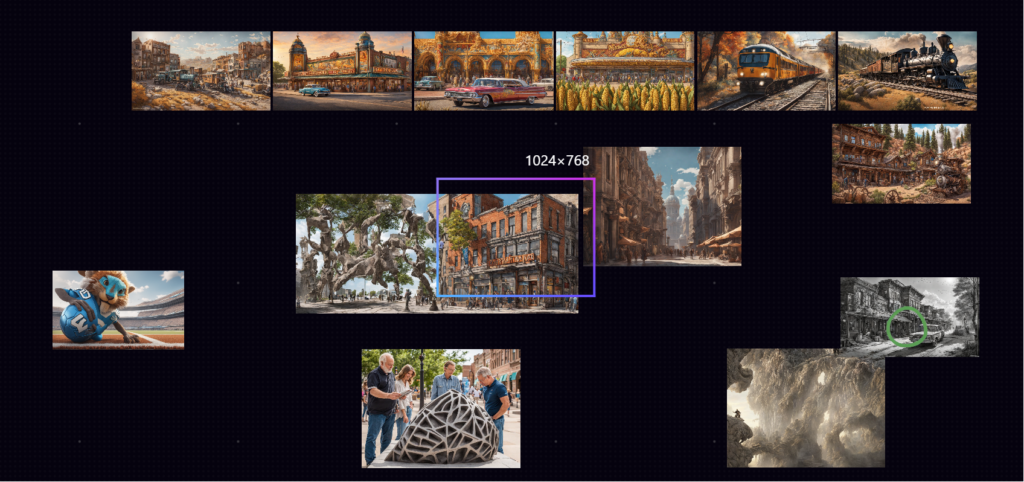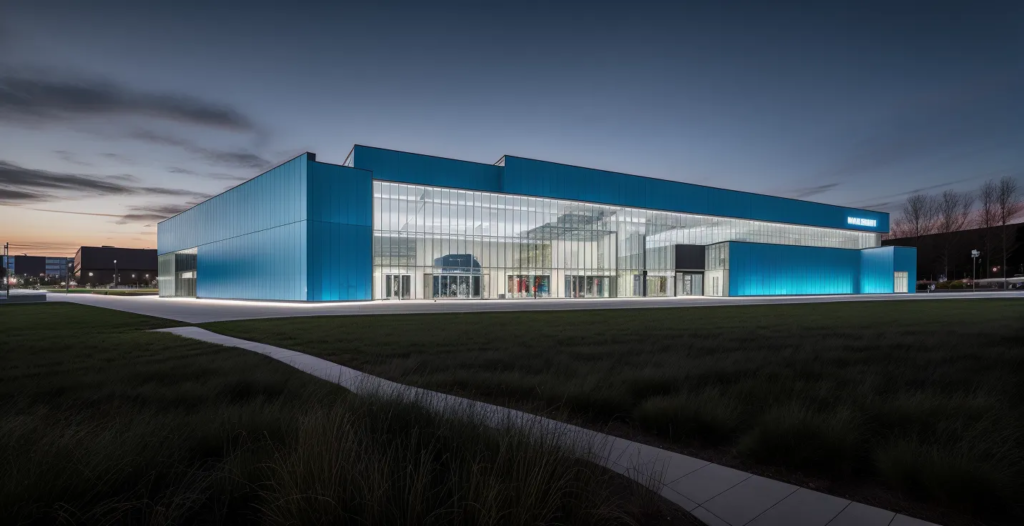I owe it to all you readers to provide a follow up to “my” last post. In case you didn’t scroll to the end, the entire post was generated using a slew of AI (artificial intelligence) tools that are available, generally for free. If you read it, I hope you found the post at least interesting, either for its superfluous content or, more importantly, for what it represented in the realm of digital content creation.

The post, essentially, was inspired by the first annual Sioux Falls AiEdge summit held a couple weeks ago. The charge to attendees essentially was “what are you going to do next in your work/business/industry to implement AI?” As I looked at the practical implications of some of the bots out there and how they might be used in an architecture firm, the pragmatic opportunities were endless. However, I figured that the next most impactful step would be to share some tools/implications, and of course related thoughts with you all.

The first thing we need to establish are some basics of understanding around AI (apologies for those folks more up to speed with the tech – this is trying to distill it down to the basics; like trying to condense the Lord of the Rings books into only 3 movies). The fact is, the conversation we’re having about AI these days is not because of the emergence of AI. AI has been around for a while, and as keynote for the AiEdge Summit, Perry Belcher, noted “AI can’t DO anything.” Only when it is paired with other technologies, mainly Robotic Process Automation, can it “DO” anything. Essentially, the surge in AI we’ve been experiencing is more of a surge in robots that can use the AI models to generate some output, ChatGPT, Midjourney, Dall-E, etc., rather than the emergence of AI itself.
There’s much more depth to the infrastructure surrounding the AI emergence, and it can be an interesting read especially for those like myself who are interested in more philosophical and ethical implications of AI (go read about why the founders of OpenAI wanted to create their own AI model), but to put it simply, we don’t have to worry about a terminator scenario, at least not any time soon, even if we may question what the lowest common denominator might be that AI will “learn” itself into. For now, the AI processing bots that exist, generally, still require a human input and a human curation in the process, especially when used in any sort of professional capacity.

But implications are heavy, especially when viewed in light of what AI is best at – processing near infinite amounts of data and pulling out specific, pertinent elements that it is directed to. Though I’d argue that life-safety analysis/building code compliance analysis can still be somewhat of an “interpretative” process, the far off horizon does show us a future that sees BIM models being reviewed for code compliance by an artificial intelligence bot. Again, this is only with the implication that a human has to parse through the resulting report to vet/validate results, similar to clash detection technologies and workflows.
With that scenario in mind, its not too far of a leap to extrapolate implications into architectural engineering, sizing building systems and analyzing best routing automatically, with minimal direction from a human engineer. While it doesn’t eliminate engineering as a discipline altogether, the amount of individuals needed is greatly reduced. The same could be said for general architectural production some day, at least in the traditional method of deliverables. This of course is all said not as a jab per se on any on engineers, BIM coordinators, or architects; you’re jobs aren’t going anywhere. Rather, AI is poised to free you up for higher level thinking and design facilitation, and that is what’s exciting.
But this is all hypothetical. Some if it is coming quick, but there are many layers to unravel and red tape that will need to be eliminated before we get there. Let’s discuss, instead, the here and now.
There are plenty of tools/bots in the AIsphere and I haven’t even begun to scratch the surface of what is out there that has architectural practice implications. Below is run-down of tools I’ve personally played around with and some implications.
- ChatGPT
- This is the main one people have likely heard of. Ask it anything. Ask it to write you anything, there are so many possibilities. Tell it to pretend it is a well known personality and write something in that style; check out the results. Ask it to do a better job, rewrite, make adjustments to previous generations. It will! Ask it to write a proverb or tell a joke. And it learns what you are wanting it to do within each chat. Implications? Teach it to write in a certain format (perhaps your firm has a certain marketing “voice” or perspective), and create an AI ghostwriter for proposals using your standard content.
- ChatPDF
- Upload a PDF (or other textual document), and ask ChatPDF to summarize, ask questions, etc. Recently I had it review a proposal write up on project management and distill it down to five bullet points. It did so, combining ideas from throughout the page-long write-up into succinct bullet points that weren’t simply pulled in the same order of the original write up. Fantastic. Next, I’ll try uploading an entire proposal and ask if it meets the clients requirements and what recommendations it has – who knows what it’ll tell me?
- MidJourney
- Okay, now for the fun stuff that architects like. MidJourney is one of the many text to image generators out there, but one of the best, and not just because it gives people the right number of fingers (yes, this is a real problem in AI image generation – again, we don’t need to worry about doomsday scenarios yet)! It’s not necessarily user friendly, as there are a lot of “code-like” inputs one needs to use to format results (change aspect ratio, adjust variability, etc.), but it comes up with fantastic and realistic images that people can mistake for photography. I often try to do some version of higher level visioning with clients on my projects, and the themes generated from those sessions make great prompts to generate inspiration imagery. Probably the best feature is the ideation structure of MidJourney that is based around generating 4 images at a time from a single prompt. Once the initial 4 images are generated, the user tells it which ones to upgrade, vary, or to regenerate the entire output, making for quick supplemental ideation.
- PlaygroundAI
- This is another text to image generator but not as sophisticated of imagery is generated as in MidJourney. However, the interface is more straightforward, utilizing a canvas to almost storyboard an idea or series of ideas. One of the most intriguing aspects of the interface, however, is its ability to read content of previously generated imagery, allowing you to “add on” to an image by having the new area of image generation be, essentially, content aware.

- LookX AI
- This is my favorite text to image generator so far, a tool truly created for designers and architects. Take a photo of a building and have it reimagine it. Take an image of a massing model and have it generate some design ideas for the exterior, in various styles like a physical model all the way to photorealistic rendering. And not just exteriors of buildings, but interiors too! The implications are endless. Recently, I used it on a project that is reimagining an existing 70s retail “box-store” type building into something else. The results are, well, somewhat unrealistic while at the same time looking convincing, but it at least gets the conversation started, especially if a well developed design thesis is developed for a project.

So, the tools are cool, implications exciting, but no one needs to worry about a robot take over yet. I encourage you to start trying out some of the tools, many of which are free, because while AI isn’t likely to take any architect’s or engineer’s job yet, the architect or engineer that knows how to use AI will be the one to take that job.

Chase Kramer, AIA, is the Director of Design for TSP Inc. in Sioux Falls. He received his M.Arch from ISU where he focused on urban design and sustainability. Before that, he received a degree in Art from Augustana University. He lives in Sioux Falls with his wife and four children. Beyond Architecture, he is an AI early adopter, musician, art lover, and fan of cheese and beer.



One Reply to “AI and Architecture”